The History of Ashorne Hill
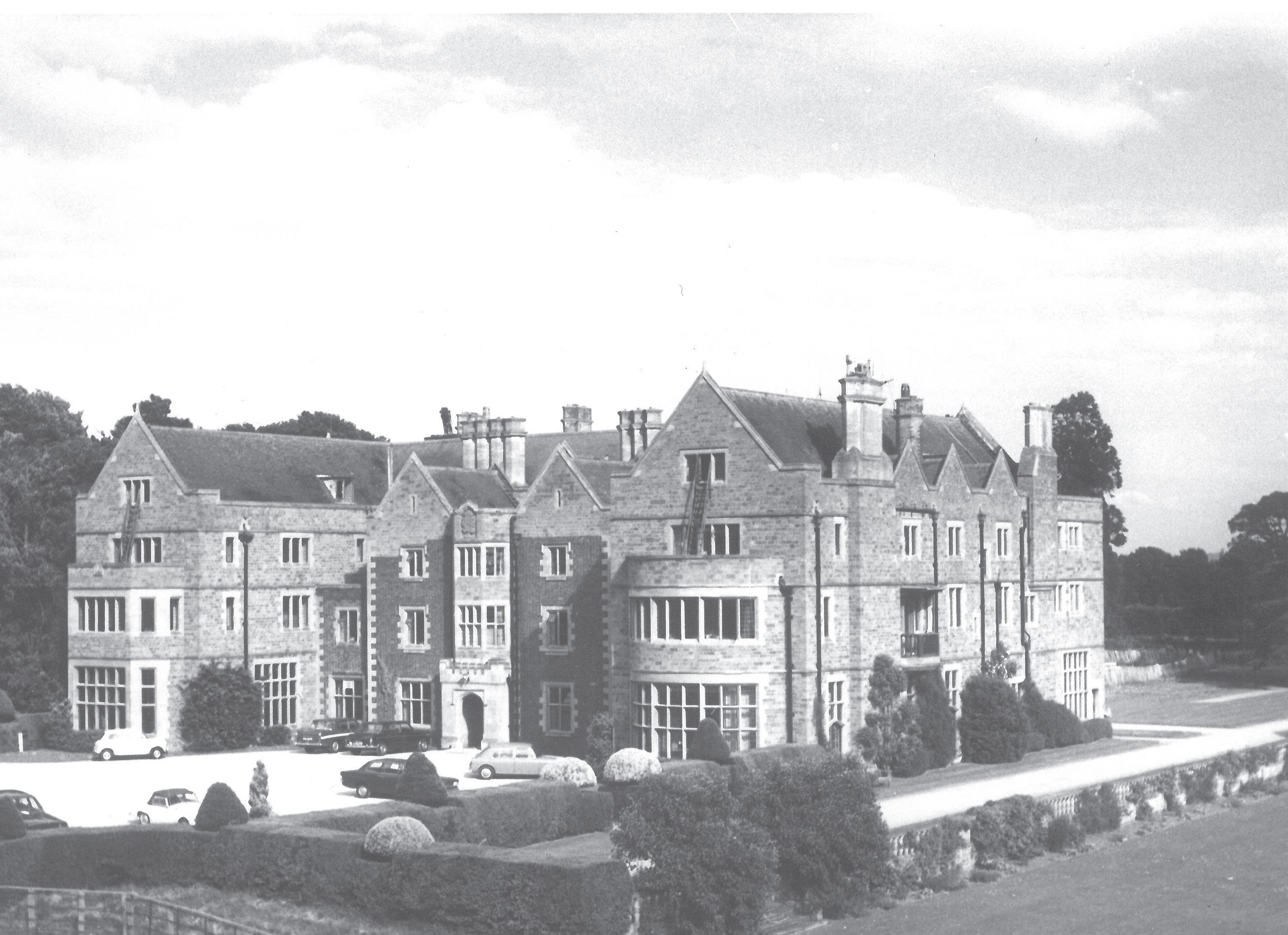
Ashorne Hill Through The Years...
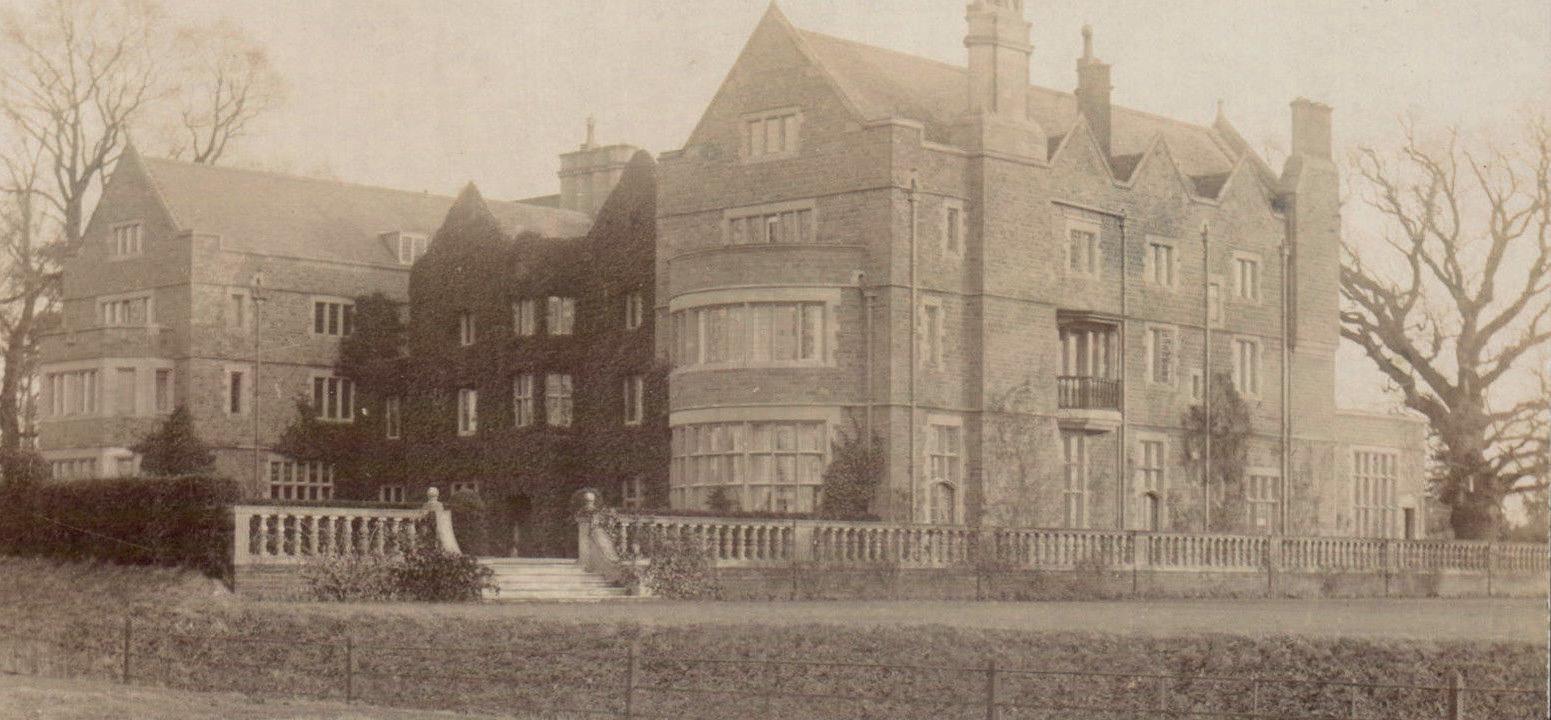
is is an extract from the Domesday book for Newbold Pacey, Warwickshire formerly known as Niwebold.
From Hascoit, the same Humphrey holds 5 hides in NEWBOLD PACEY. ere is land for 9 ploughs. In demesne are 4 ploughs, and 5 slaves; and 11 villans and 11 bordars with 8½ ploughs. ere are 10 acres of meadow. It was worth 60s.; now 100s. Alfred held it freely TRE. From Hascoit, the same Humphrey holds HASELEY. ere are 3 hides and half a virgate of land. ere is land for 2 ploughs. In demesne is 1 [plough]; and 3 villans with a priest and 7 bordars have 2 ploughs. ere is a mill rendering 4s., and 6 acres of meadow, [and] woodland 1 league long and 2 furlongs broad. It was worth 20s.; now 30s. Azur held it freely. NICHOLAS the crossbowman holds of the king 3 hides and 1 virgate of land in AILSTONE. ere is land for 5 ploughs. In demesne are 2 [ploughs], and 4 slaves and 3 female slaves; and 9 villans and 3 bordars with 3 ploughs. It was and is worth 60s. Leofric held it freely...
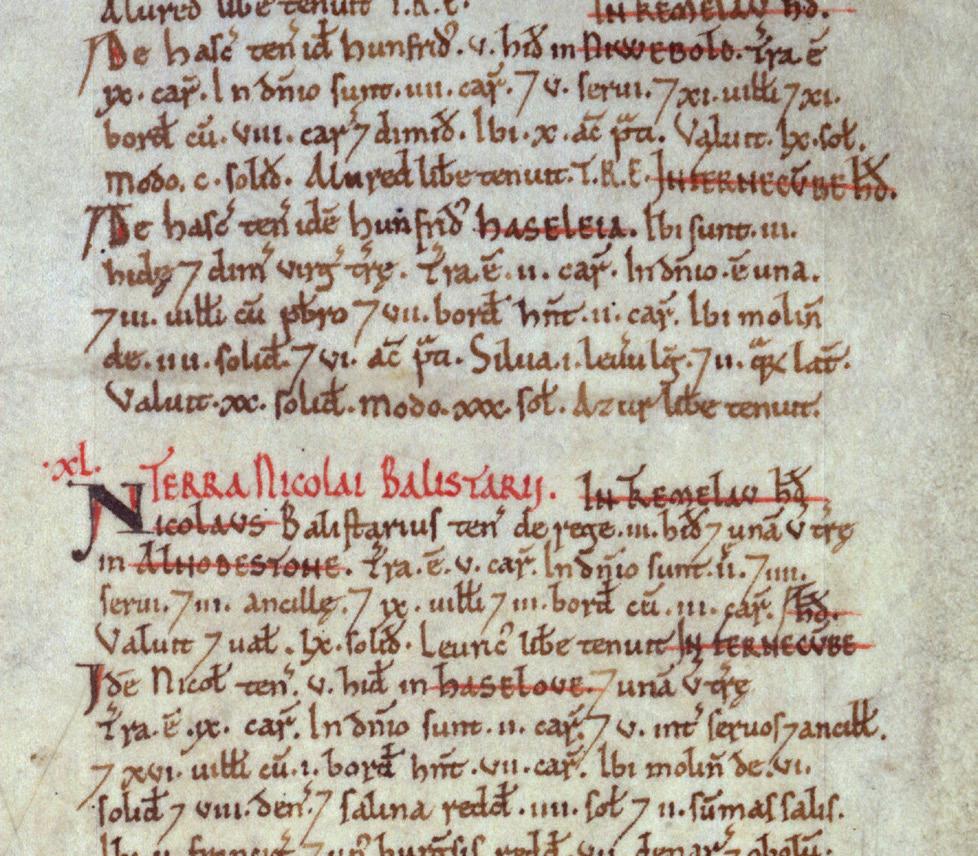
Ashorne Hill - History

e Great Hall
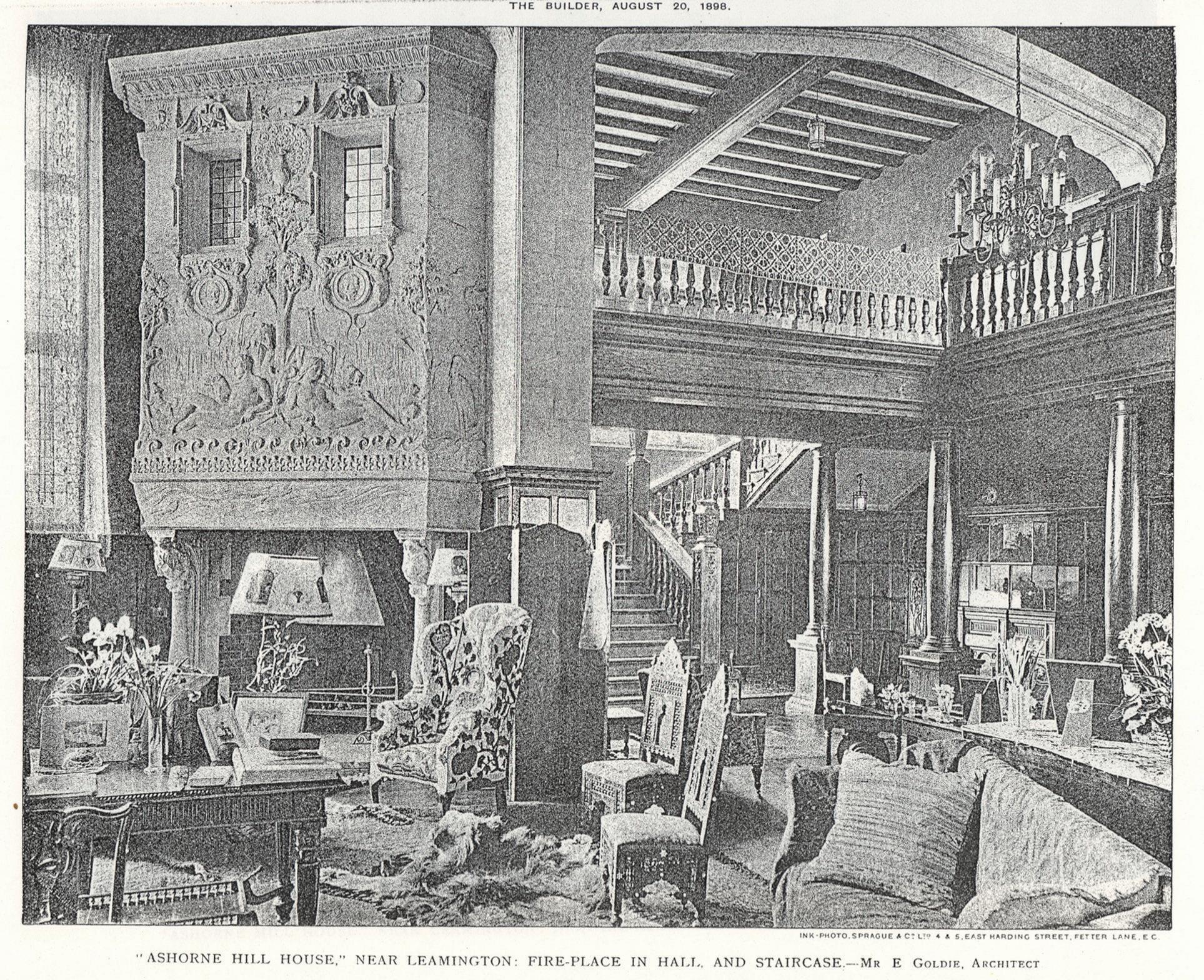
Ashorne Hill Through The Years...
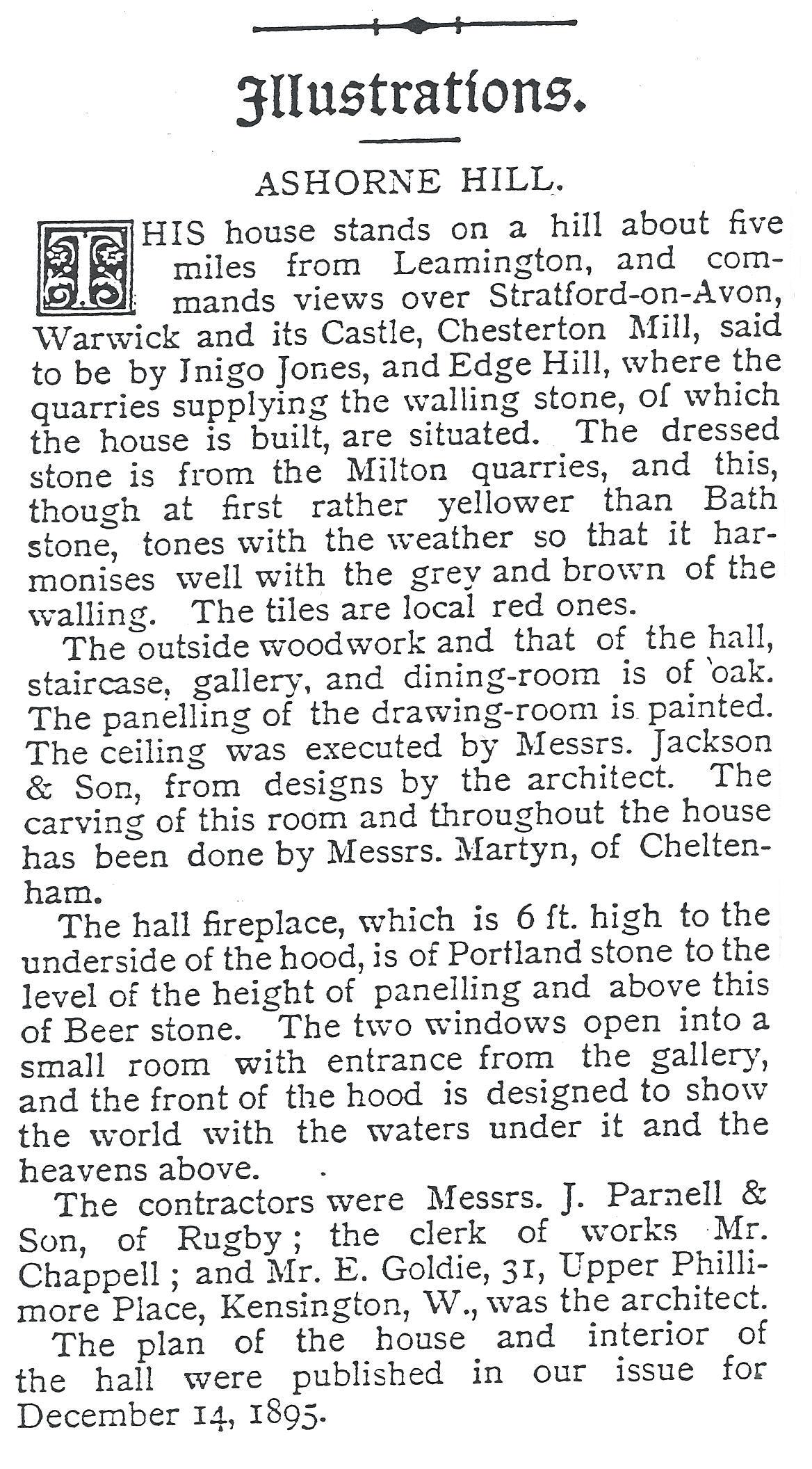
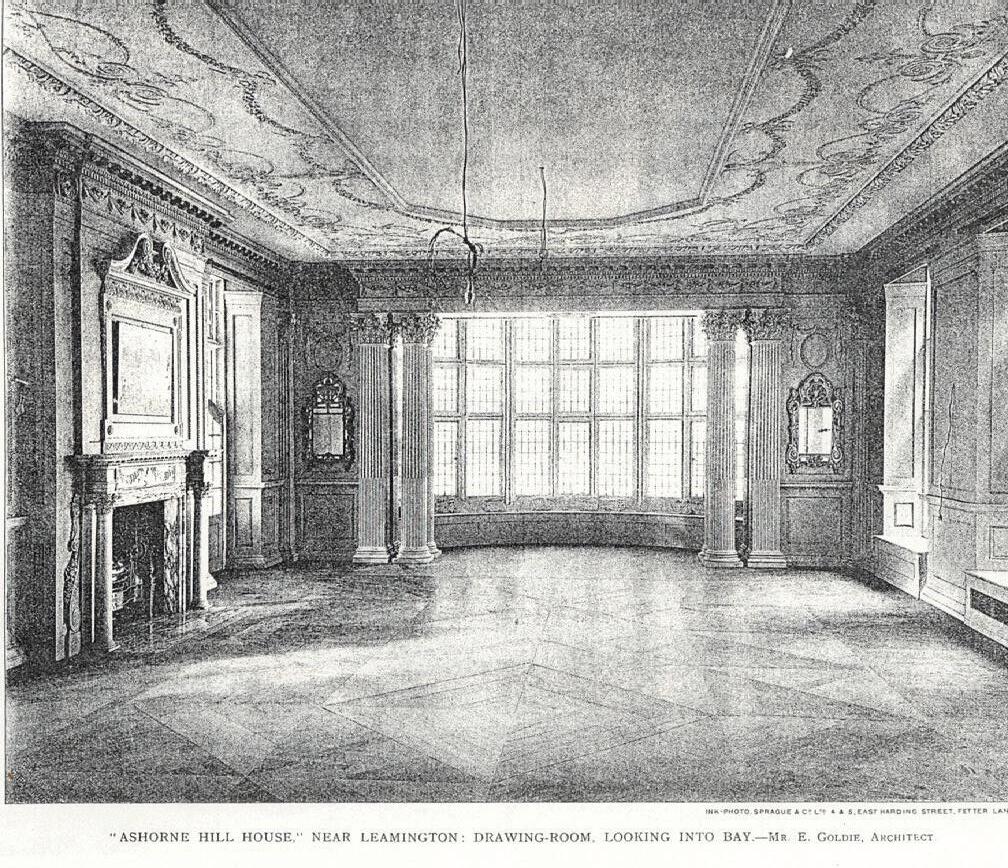

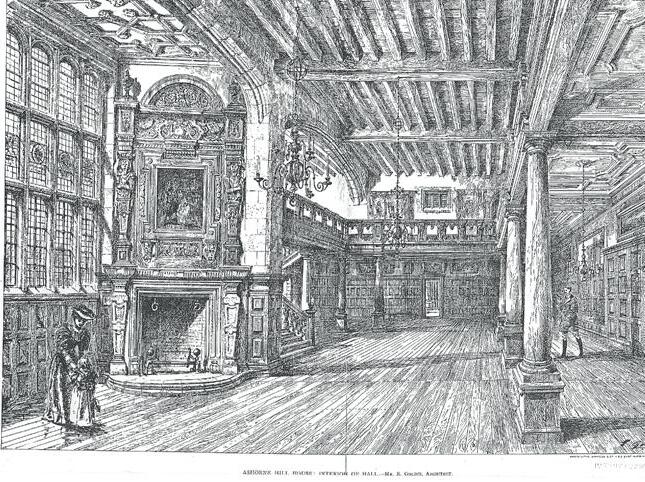 e Charlecote Room
e Dining Room (Now Reception)
Sketch of Great Hall
e Charlecote Room
e Dining Room (Now Reception)
Sketch of Great Hall
Ashorne Hill’s link to famous female aviator

Many people have taken some form of tenancy at Ashorne Hill over the years and it is fascinating to learn about their lives. One such tenant went by the name of James Heath who was born in 1852 and educated at Cli on College. He later became a Conservative MP for North West Sta ordshire between 1892 and 1906 and was created rst Baronet of Ashorne Hill in 1904 where he resided at the Ashorne Hill Manor House until the expiration of his lease in 1910. During his time at Ashorne Hill he took the title of ‘Sir James Heath’ and in his spare time became the Vice President of Leamington Cricket Club. In 1927 at the age of 75 he went on to marry ‘Lady Mary Heath’ who became a famous Irish pilot, supporting her on ying trips well into his eighties.
Lady Sophie Mary Heath
When the young Sophie Mary Peirce-Evans was one year old, her father John Peirce-Evans bludgeoned her mother Kate eresa Dowling to death with a heavy stick. He was found guilty of murder and declared insane. His daughter was taken to the home of her grandfather in Newcastle West where she was brought up by two maiden aunts, who discouraged her passion for sports.
She earned a degree in science from the University of Dublin. As Sophie C. Elliot-Lynn she was a member of the Great Britain Women’s Athletics Olympic team and a key force in founding the English Women’s Amateur Athletic Association in 1922. She was Britain’s rst women’s javelin champion and set a world record for the high jump. She wrote Athletics For Women and Girls: How to be an Athlete and Why in 1925. She was also a delegate to the International Olympic Council in 1925, when she took her rst ying lessons.
By 1927, her rst husband had died – found drowned in the river ames - and she was free to marry Sir James Heath, who was over forty years older than her.
Lady Heath fought the ban and the commission agreed that if she attended ight school and passed the test, she would be granted a commercial licence. Once Lady Heath had her private licence, she spent every weekend competing in air races, o en winning them. She also made attempts at altitude records, and was the rst woman to take a parachute jump from a plane, landing in the middle of a football pitch while a match was in progress.
Ashorne Hill Through The Years...
Lady Heath quali ed for a private, or ‘A’ ying licence, but the International Commission for Air Navigation had revoked women’s rights to earn a commercial, or ‘B’ licence, in 1924.
Sir James Heath and Lady Heath were married in 1927 and James agreed to buy his bride a new turquoise blue plane to match her favourite stone. e day before their marriage, in October, she had taken the plane up above London to establish an altitude record of 19,000 feet, yet London society sni ed and dubbed her a gold-digger.
With new husband and plane in tow, Lady Heath headed to South Africa and her life’s great adventure. In three months from January to May 1928, she became the rst man or woman to y a small plane from Cape Town to London.
An interesting story from that ight is that when she requested the British Air Ministry for a plane to lead her across the Mediterranean sea, she was denied. Not to be defeated, she asked Benito Mussolini for an escort plane. He agreed on the condition that she share her experiences with him. On this records are silent.

Unfortunately, just when her fame was at its height, Lady Heath was badly injured in a crash in Cleveland Ohio in 1929, She was never the same a er, but returned to Ireland running her own company near Dublin, training pilots who would later establish the national airline Aer Lingus.
Lady Heath died a er a fall from a tram car in London in 1939. However, for a ve-year period from the mid-1920s, Limerick born pilot Lady Mary Heath was one of the best-known women in the world.
It was an era when everyone had gone aviation mad, due to the exploits of Charles Lindberg and, later, Amelia Earhart.
Sir James survived her by three years until his death in 1942, when his title ‘Baronet of Ashorne Hill’ became extinct.
Sources:
Lomax, Judy, Women of the Air, Lomax, 1986
Lady Icarus - the Life of Irish Aviator Lady Mary Heath
www.womeno orida.com, www.time.com

Then and now...



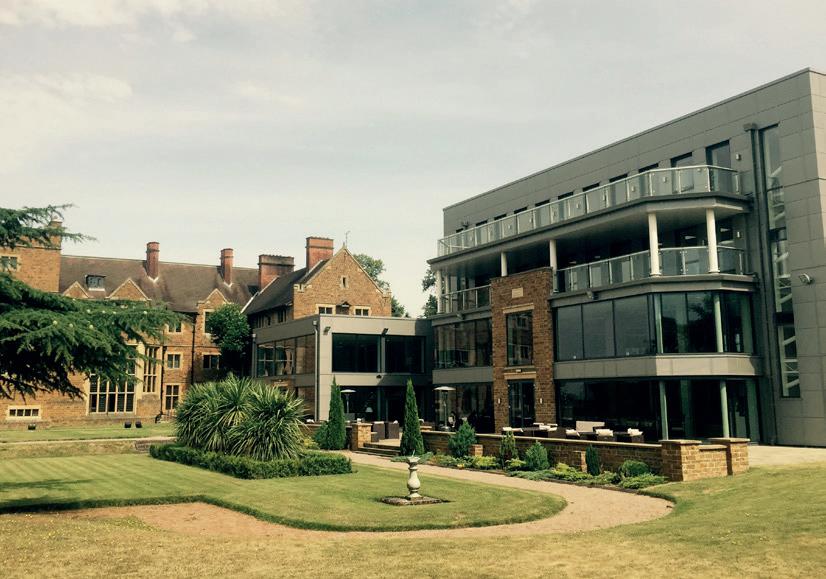


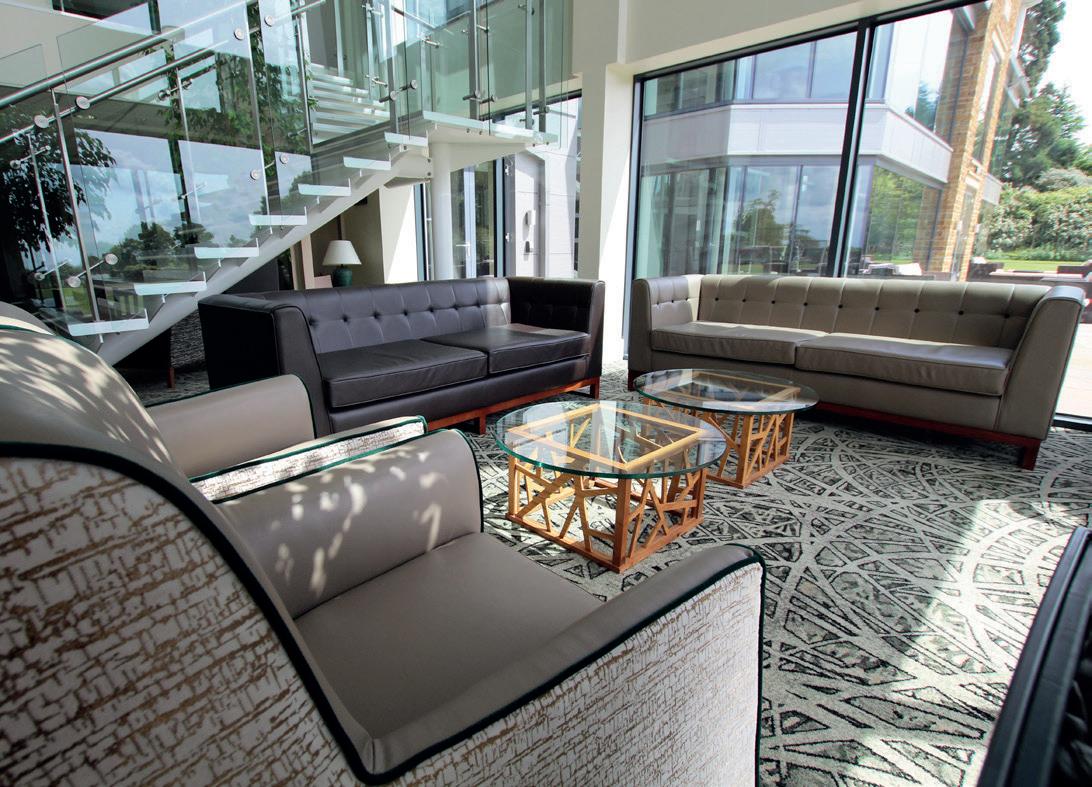
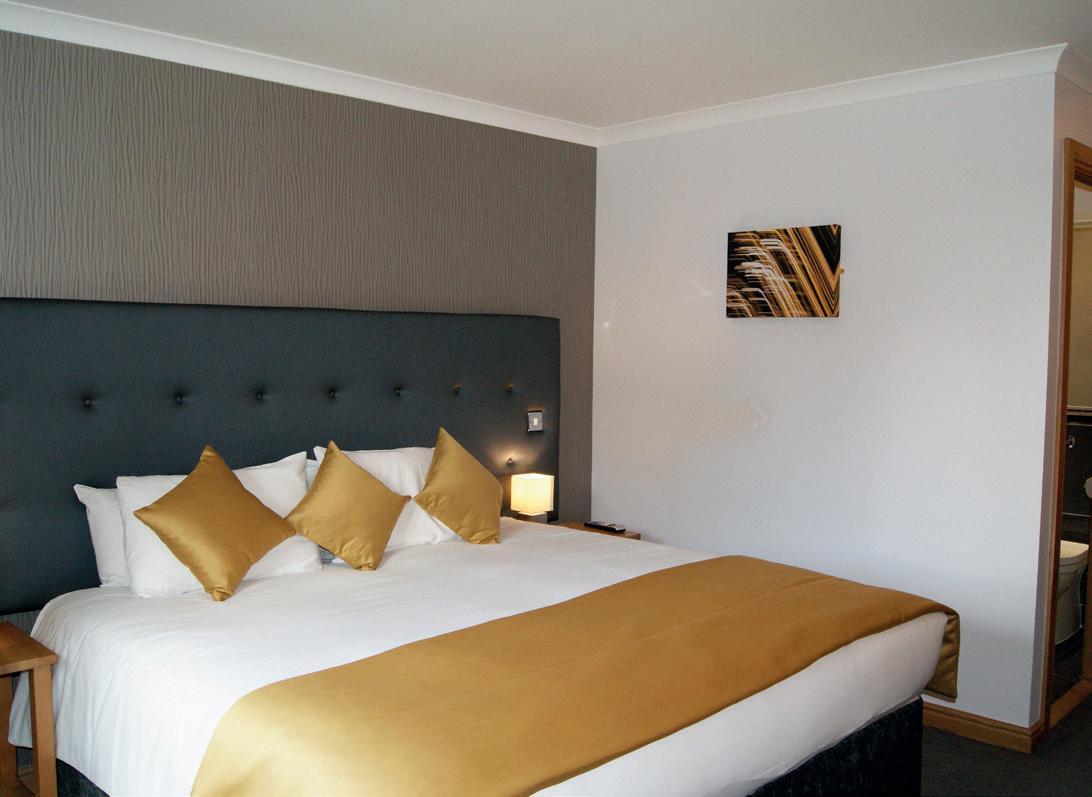
The War years
1939 - 1945

In 1939, when war appeared imminent, the British Iron and Steel Federation decided to seek an evacuation centre. In July 1939 Mrs Bryant sold Ashorne Hill to the British Iron and Steel Corporation, and a trading company was formed by the British Iron and Steel Federation to handle commercial transactions, such as central import or raw materials on behalf of the industry.

To provide additional accommodation for the Corporation, Federation and the Iron and Steel Control which was established by the Ministry of Supply at the outbreak of war, various buildings of timber and steel construction were put up on the most suitable sites in the gardens and grounds adjacent to the mansion house. Six dormitory and four o ce buildings, a recreation and dining hall, and forty garages were erected.

In addition the central yard of the existing stable block was enclosed to provide the main o ce accommodation for approximately 600 and living accommodation for 30 men and women.
e remaining 300 were housed in rented and requisitioned houses and hotels in and around Leamington Spa, Warwick, Wellesbourne and Stratford-Upon Avon. Warwick Castle was used as additional o ce accommodation. By December 1945 virtually all the departments which had been evacuated to Warwickshire, had returned to London. e Statistics Department remained at Ashorne Hill until December 1946.
Post War
1946 +

Immediately a er the war, a few Iron and steel conferences were held at Ashorne Hill and the estate was used on occasions as a holiday resort by some of the members of the London sta of the Federation and Corporation. By 1947 the conferences organised by the iron and steel and allied industries had increased appreciably and it became apparent that there was considerable advantage to the industry in having such a place available. As Ashorne Hill became known as a Conference Centre, applications were received from rms and organisations throughout the United Kingdom. By 1958 more than 30000 delegates from across the country had attended meetings and conferences at Ashorne.
In May 1957 Ashorne Hill became the British Iron and Steel Federation Management College. is was the beginning of a long history at Ashorne Hill of managerial training and groundbreaking work with the heads of industry.
Even then, as now, members of the management courses could spend much of their time working in groups on both up-to-date techniques of management and recent technical developments within the industry, assessing application, co-ordination, development and organisation. During this time Ashorne Hill began running courses for Assistant Departmental and Departmental Managers in the Iron and Steel industry. Other courses including Systems Analysis, were conducted in the house and the old stable block, now known as the Old Quad, was converted in to 36 bedrooms.


1960s
In 1966 Ashorne Hill became a private company limited by guarantee and was later granted charitable status. It had its own Board of Governors, drawn from the steel industry and Universities.
In the late 1960s an unfortunate incident occured and one of the buildings was destroyed by re, but fortunately no casualties resulted.


In Reception above the replace there is a Latin quotation which reads as follows:-

‘In bello patris bis ferrumIn pace facultas’
Which in translation means ‘Iron is the Nation’s strength in war time and its resource in peace’
e 1960s was a time of change for British industry. e main reason for this was the advent of the computer. Ashorne Hill ran courses training members of the Steel industry in the running of up-to-the minute computer systems.

1970s
During the 1970’s a plan was put in place to build an extension to the house, using the latest technology from British Steel, a er a number of outbuildings were demolished in the 1960s.
On the 21st May 1970 e Right Honorable Lord Melchett, then the chairman of the British Steel Corporation, opened the four-storey extension. e building provided catering facilities, dining rooms, seminar and lecture rooms. Stelvetite plastic-coated steel was used extensively for cladding the interior walls of the buildings.
During the 1970s Ashorne Hill was deemed to be an important and prominent place, so much so that during the period of IRA bombing in the late 1970s there was a bomb scare which resulted in the delegates and sta having to be evacuated for fear of an explosion.

Course Brochure -1972



1980s
is newspaper clipping was taken from Steel Works News in 1984.

e article mentioned 23 participants that took part in a management course at Ashorne Hill, the course was made up of two, four week modules. Senior management development, o cer John Headford said, “ e aim of the course is to develop the individual while increasing his or her job knowledge and skills. e main emphasis is on group problem solving, decision making and achieving results. e tasks are demanding but exible enough to cater for the varying capabilities of the course members.”

One of the members re ected on the course, “A vast amount of ground was covered using di erent modes of transport with various set tasks to complete on the way involving climbing abseiling and other techniques!” e purpose of the exercise was to increase con dences and awareness, improve problem solving and develop team leadership skills.
In 1987 the Dasset accommodation block was completed adding a further 21 bedrooms to Ashorne Hill’s o ering.


1990s

During the 1990s several large building and refurbishment projects were undertaken. In 1990 three new seminar rooms were added to the concourse building.


In 1992 a project began to renovate rooms in the main manor house to become executive bedrooms, Ashorne Hill now boasts seven bedrooms in the original building.
1998 saw the development of the bar and Sherbourne extension which was built to provide enhanced facilities for both training and leisure. e extension of the Sherbourne suite now allows a capacity of 150 theatre style.

 Course brochure for Graduate and Young Manager - 1990s
Ashorne Hill sta - 1990s
Ashorne Hill refurbished bar - 1998
Rear elevation of the Sherbourne Construction of the Sherbourne
Course brochure for Graduate and Young Manager - 1990s
Ashorne Hill sta - 1990s
Ashorne Hill refurbished bar - 1998
Rear elevation of the Sherbourne Construction of the Sherbourne
A whole new chapter for Ashorne Hill began with the creation of Ashorne Hill Conference Centre and i2i Training & Development as two new brands under the Ashorne Hill Management College umbrella. Aiming to serve all markets, not just steel, AHCC had a clear focus on providing excellence to the conference centre market, and i2i focused its professionalism on the design and delivery of training.
2000s
Ashorne Hill wins National Training Awards - (2009)




Ashorne Hill Management College and steel giant Corus were delighted to have won two prestigious Training Awards in a ceremony that took place at the National Motor Cycle Museum in the West Midlands on October 1st 2009. e ‘Felt Leadership’ training programme won both a ‘Regional Training Award’ and the prestigious ‘National Training Award’.
Specialising in team building

e collaborative application was made for the ‘Felt Leadership’ course, a unique programme designed a er the need for radical new safety training was highlighted by Corus Managers. Together Ashorne Hill and Corus developed a unique training programme that, for the rst time, gave employees responsibility for managing their own safety improvements.
 John Carson joins Ashorne Hill as Managing Director in 2004.
Ashorne Hill Celebrates 50 years as a training provider.
John Carson joins Ashorne Hill as Managing Director in 2004.
Ashorne Hill Celebrates 50 years as a training provider.
2010s






e refurbishment project included a kitchen extension along with an extension to the main dining room including a paved patio area.
e refurbishment saw the dining room that previously seated 100 diners, turned into a beautiful space including a mezzanine level. e extension enables Ashorne to seat around 200 guests, while the mezzanine level allows Ashorne Hill to provide an alternative catering service to the hundreds of delegates that pass through the doors each week. e interior was completely transformed into a welcoming space perfect for dining and private functions.


A new staircase was created in the Concourse area opening up the new entrance to the main dining room. A beautifully laid patio is being built overlooking the wonderful grounds and is perfect for a drinks reception with outdoor lighting showcasing the true beauty of the Grade II listed manor house.

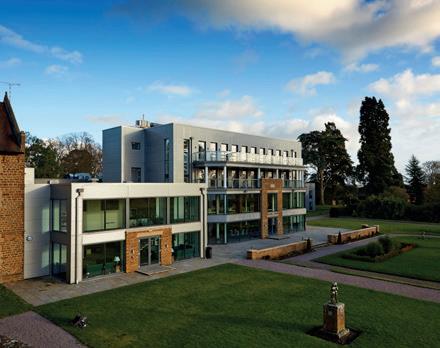 Ashorne Hill became licensed to conduct Civil Ceremonies in 2010.
Ashorne Hill embarks on £2.4m refurbishment (2011 - 2012)
Ashorne Hill’s charitable status is transferred from Tata Steel to Jaguar Land Rover.(2015)
Refurbishment of the Great Hall (2015)
Ashorne Hill became licensed to conduct Civil Ceremonies in 2010.
Ashorne Hill embarks on £2.4m refurbishment (2011 - 2012)
Ashorne Hill’s charitable status is transferred from Tata Steel to Jaguar Land Rover.(2015)
Refurbishment of the Great Hall (2015)
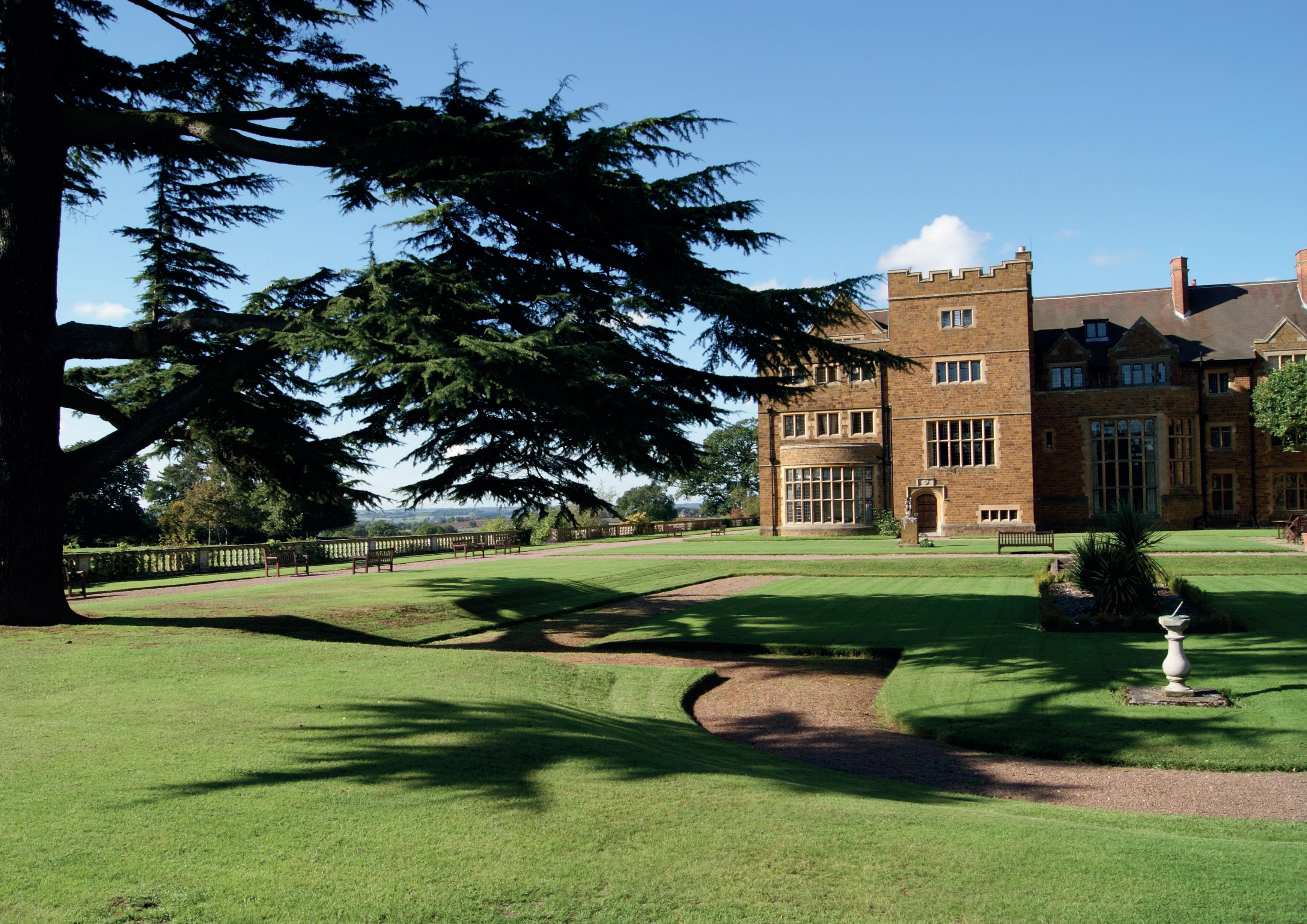
Ashorne Hill Management College Leamington Spa Warwickshire CV33 9QW Enquiries@ashornehill.co.uk 01926 488000









 e Charlecote Room
e Dining Room (Now Reception)
Sketch of Great Hall
e Charlecote Room
e Dining Room (Now Reception)
Sketch of Great Hall

































 Course brochure for Graduate and Young Manager - 1990s
Ashorne Hill sta - 1990s
Ashorne Hill refurbished bar - 1998
Rear elevation of the Sherbourne Construction of the Sherbourne
Course brochure for Graduate and Young Manager - 1990s
Ashorne Hill sta - 1990s
Ashorne Hill refurbished bar - 1998
Rear elevation of the Sherbourne Construction of the Sherbourne





 John Carson joins Ashorne Hill as Managing Director in 2004.
Ashorne Hill Celebrates 50 years as a training provider.
John Carson joins Ashorne Hill as Managing Director in 2004.
Ashorne Hill Celebrates 50 years as a training provider.







 Ashorne Hill became licensed to conduct Civil Ceremonies in 2010.
Ashorne Hill embarks on £2.4m refurbishment (2011 - 2012)
Ashorne Hill’s charitable status is transferred from Tata Steel to Jaguar Land Rover.(2015)
Refurbishment of the Great Hall (2015)
Ashorne Hill became licensed to conduct Civil Ceremonies in 2010.
Ashorne Hill embarks on £2.4m refurbishment (2011 - 2012)
Ashorne Hill’s charitable status is transferred from Tata Steel to Jaguar Land Rover.(2015)
Refurbishment of the Great Hall (2015)
